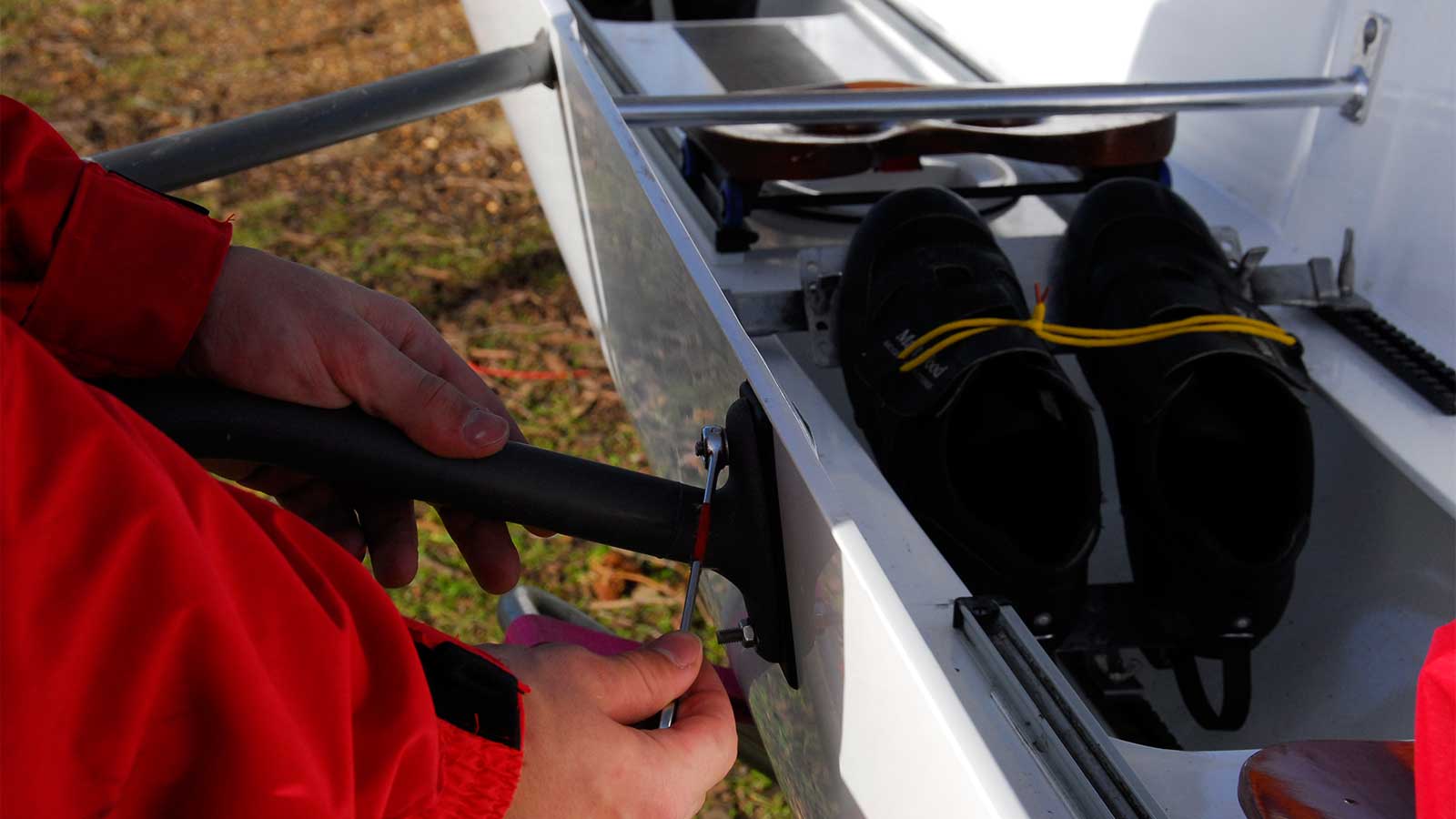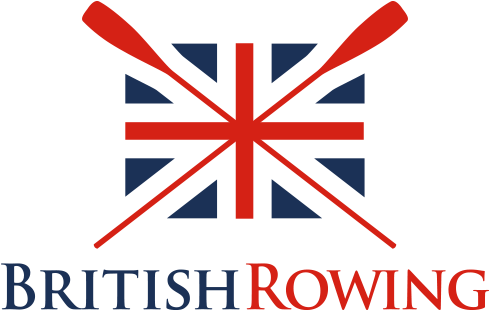Equipment
To help you get the most out of rowing, here’s a run down on some the equipment you may be using
| Spoon | |
|---|
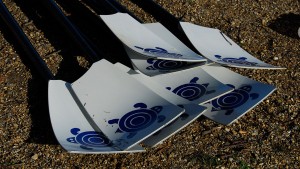 | The end of the oar which enters the water. Usually painted in the colours of the club represented by the rower. There are different shaped spoons; cleaver are shaped like meat cleavers and macon oars have the traditional tulip shaped spoon. |
- Spoon:

- The end of the oar which enters the water. Usually painted in the colours of the club represented by the rower. There are different shaped spoons; cleaver are shaped like meat cleavers and macon oars have the traditional tulip shaped spoon.
| Oars | |
|---|
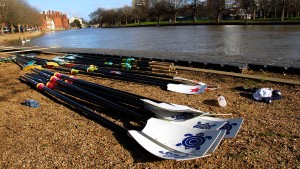 | Rowers use oars (or blades) as a lever to propel the boat. |
- Oars:

- Rowers use oars (or blades) as a lever to propel the boat.
| Riggers | |
|---|
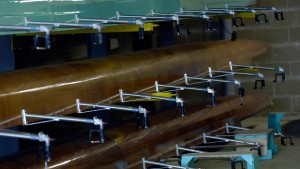 | The riggers of a boat (metal outrigger) are situated at each seat in the boat and support a pivot (swivel and gate) to hold the oar out from the side of the boat. There are currently several different designs of rigger from two or three stay metal or carbon tubing to metal or carbon wings. |
- Riggers:

- The riggers of a boat (metal outrigger) are situated at each seat in the boat and support a pivot (swivel and gate) to hold the oar out from the side of the boat. There are currently several different designs of rigger from two or three stay metal or carbon tubing to metal or carbon wings.
| Seat | |
|---|
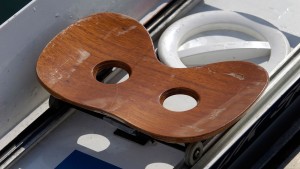 | Some boats have fixed seats and some have sliding seats. Rowers sit on a seat. The photos shows a sliding seat meaning that it will move backwards and forwards on wheels to allow the rower greater movement. The runners on which the wheels sit are called the slide. |
- Seat:

- Some boats have fixed seats and some have sliding seats. Rowers sit on a seat. The photos shows a sliding seat meaning that it will move backwards and forwards on wheels to allow the rower greater movement. The runners on which the wheels sit are called the slide.
| Shoes | |
|---|
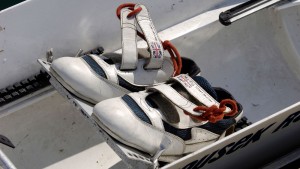 | Rowers attach their feet to their boat via shoes fixed to a metal plate in the boat (foot stretcher). This provides them with a stable base to push off. They should have heel restraints to allow quick release of the feet in event of a capsize. |
- Shoes:

- Rowers attach their feet to their boat via shoes fixed to a metal plate in the boat (foot stretcher). This provides them with a stable base to push off. They should have heel restraints to allow quick release of the feet in event of a capsize.
| Coxes’ Seat | |
|---|
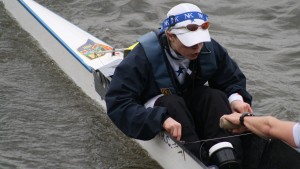 | Some boats have a cox who sits either in the front (bow) or back (stern) of the boat in the coxes’ seat. In a coxed boat, the cox steers the boat using a rudder and built in steering mechanism and instructs the crew whilst also acting as a lookout. |
- Coxes’ Seat:

- Some boats have a cox who sits either in the front (bow) or back (stern) of the boat in the coxes’ seat. In a coxed boat, the cox steers the boat using a rudder and built in steering mechanism and instructs the crew whilst also acting as a lookout.
| Bow and Bow Ball | |
|---|
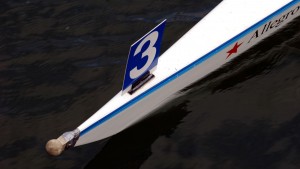 | The bow is the front end of the boat and it is also the name given to the rower who sits in the seat nearest to the bow (the bow rower is the rower who will cross the finishing line first). The bow ball is a ball-shaped safety cap that sits over the bow end of the boat. This is compulsory on all rowing boats for the safety of other water users. |
- Bow and Bow Ball:

- The bow is the front end of the boat and it is also the name given to the rower who sits in the seat nearest to the bow (the bow rower is the rower who will cross the finishing line first). The bow ball is a ball-shaped safety cap that sits over the bow end of the boat. This is compulsory on all rowing boats for the safety of other water users.
| Rudder | |
|---|
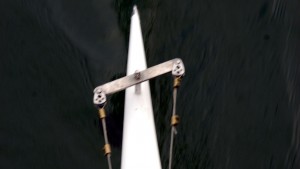 | Eights, fours, pairs, most quads and some doubles have a rudder to steer the boat. The rudder is connected – usually by wires – to the cox’s seat or a steering shoe in coxless boats. |
- Rudder:

- Eights, fours, pairs, most quads and some doubles have a rudder to steer the boat. The rudder is connected – usually by wires – to the cox’s seat or a steering shoe in coxless boats.
For more equipment definitions and general rowing terms, have a look at our Glossary.
